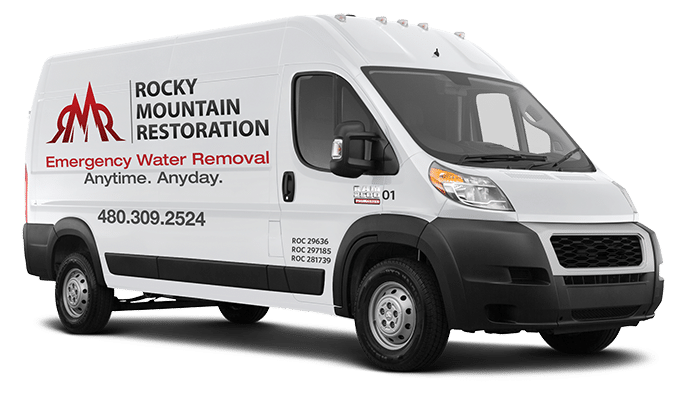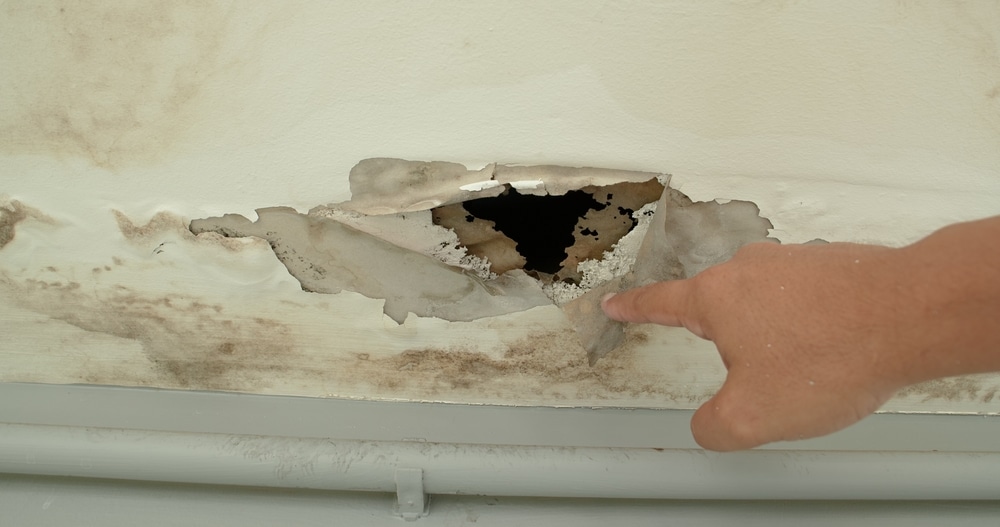Did you know water damage to drywall often means it needs to be replaced? This is because mold can grow, releasing harmful chemicals and raising the risk of breathing problems.
They warn against trying to fix it yourself. This could make things worse or even harm your health. To fix water-damaged drywall right, finding out where the water came from is key. This could be from a leaky pipe or from flooding outside.
Experts offer advanced mold removal and quick drying services. These help ensure your home is safe and fixed properly. If you’re thinking about replacing the drywall, it can cost around $300-$400 for the materials. Labor costs can add up to $100 per hour or $70 per sheet. The whole job can take days or even weeks, depending on how big the area is.
Key Takeaways
- Water damage to drywall often necessitates replacement due to health hazards like mold and structural risks.
- Identifying the water source, whether from plumbing issues or external flooding, is essential for addressing wet drywall.
- Professional assessment is recommended to determine if drywall can be salvaged or if replacement is required.
- Advanced mold remediation and rapid structural drying are critical services for safe, effective recovery.
- Drywall replacement costs can average $300-$400 for tools and materials, with additional labor fees potentially adding up to $100 per hour.
Signs and Symptoms of Water-Damaged Drywall
Water-damaged drywall shows clear signs that need repair or replacement. Spotting these signs early is key to keeping your home safe and avoiding expensive fixes.
- Visible Watermarks: Water stains on the drywall are a clear sign of damage. These stains turn brown and grow if the water issue isn’t fixed.
- Moisture Sensation: Feeling moisture on the drywall means water has gotten in. This often means you need to replace the moisture damaged drywall.
- Textural Changes: Water can make drywall soft and crumbly. If it feels soft or spongy, it’s time to act fast.
- Bubbling and Peeling Paint: Water damage can make paint bubble or peel. This shows the drywall is damaged underneath.
- Cracks and Sagging: Cracks and sagging are big signs of water damage. If the drywall moves a lot, repairing wet drywall might not work, and you might need to replace it.
- Mold Growth: Wet walls can grow mold, which is bad for your health. Mold can cause allergies and asthma.
- Warping: Warped drywall means serious water damage. Fixing it quickly is important to avoid more problems.
- Water Spots: Water spots mean water is leaking through the walls. This makes the problem worse.
Acting fast when you think there’s water damage is key. Repairing wet drywall quickly can save you from bigger problems and more money. For serious cases, like mold, it’s best to get help from experts. They can safely handle and remove the mold to keep you safe.
Do I need to replace drywall if it gets wet?
Deciding whether to replace wet drywall or remove it depends on how wet it is and for how long. Drywall is porous, which means it can get moldy and weak if it stays wet for too long. Mold can start growing in just 24-48 hours if there’s still moisture around.
Signs that your drywall might need to be replaced include big flakes of paint, water spots, sagging, and cracks that look like lightning bolts. These signs mean water has gotten through the walls and damaged the drywall.
If water damage makes the drywall look different, warp it, or spread mold, you might need to replace it. This is the only way to stop it from getting worse and to keep your home safe.
Experts dealing with big water damage jobs usually start by drying things out, then tear out the damaged parts, and finally fix everything. It can take about 3 days to dry wet drywall with the right equipment. But, if you don’t fix the moisture in 48 hours, mold can grow and be very bad for your health. Old homes with asbestos insulation or drywall make repairs even harder, showing why you need experts to do the job right.
Conclusion
Dealing with water-damaged drywall is key to keeping your home safe and sound. You might not always need to replace wet drywall right away. But, it depends on how much water got in and how fast you can dry it out.
Signs like water stains, peeling paint, and mold mean you need to act fast. This stops bigger problems from happening.
Acting quickly can help save your drywall. Fixing the water leak and drying the area can limit the damage. But, it’s smart to get a pro to check if you really need to replace it.
Tools like moisture meters and expert checks help figure out what to do next.
Preventing water damage is also important. Check your home often, fix leaks fast, and use dehumidifiers. These steps help keep your drywall safe.
Getting help quickly saves time and money. It also stops mold and keeps your home strong.













